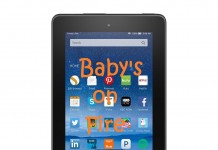 Kindle review has an excellent overview article on ereaders by price. The divide the readers into $150, entry level; $250, main ereader product lines; $350 to $400, “we do more”; $500, big screen; and over $500, specialized and business. Recommended reading for anyone in the market to buy a first unit.
Kindle review has an excellent overview article on ereaders by price. The divide the readers into $150, entry level; $250, main ereader product lines; $350 to $400, “we do more”; $500, big screen; and over $500, specialized and business. Recommended reading for anyone in the market to buy a first unit.
The Review says:
There seems to be little hope for eReaders over $400
There are two reasons I say this –
1. There are companies delivering 9″ eReaders at the $299 and $399 price point.
2. At $450 and $500 you start seeing very strong competitors – 12″ netbooks, high-end netbooks, the iPad, tablets, and more.eReaders can hold their own in the $250 and $150 category as they provide good value for money and offer eInk screens and other features devoted to reading. At $350 to $400 they can add-on value-add features like great touchscreens, handwriting support, color, etc. and still be very compelling.
Above that we run into multiple problems – lack of features to justify the price, brutal competition, further thinning of an already thin reader population, and a lack of the it pays for itself via cheaper ebooks argument.
$500 eReaders probably represent 10% of the eReader market and tablets and netbooks are going to destroy that (perhaps cut it to a quarter in size). Hopefully the press and non-readers interpret that as a great victory and leave us in peace – with our $250 eReaders and our $10 eBooks.


































This is a comprehensive summary. There are literally dozens of e-readers to choose from — over 60 in the list above. And that’s the first clue that this is an emerging, not yet stabilizing, market. Tablets and netbooks just muddy the waters further. (Side thought: How many are actually available to the average consumer? In Canada, I’d guess 4 or 5 of the 60 odd here.)
It’s a given that dedicated e-book readers, if they are to survive as a category, will need to deliver very specific dedicated benefits at the lower end of the price scale. Once $500 is breached, the multi-purpose devices will rule the day. (That category is also just emerging, so no bets on winners there either — even on the iPad. Anyone remember the Newton?)
E-book readers need to be fed: devices tied to easy feeding streams have a natural, and powerful, advantage. It’s no accident Amazon is the front-runner and Sony — which built the Sony book store solely to compete in the category (and otherwise has zero corporate interest in “print” publishing) — is second. B&N could become a contender but they don’t have a significant international presence ….
But suppose someone builds an e-reader which, in one device and at the mid-range price-point, delivers a strong reading experience which includes ePub and Mobi (and DRM for both). Differentiators could be wifi, wirelesss 3G and incremental pay 3G; text-to-speech; multiple fonts; multiple dictionaries; content sharing whilst respecting DRM.
It’s not hard to imagine a device with most of the above characteristics being a winner in the $200 range. Increase the screen size to approach magazine format, add color, add touch screen and wifi for interactivity, and you still have a contender as a dedicated device at $350 range.
Well, there is a device that supports both Adobe and Mobi DRM’s. It even aspires to read LITs and DocReader and another handful of legacy formats. The Hanlin v3 is available a dozen rebranded flavors world-wide and supports almost a dozen different firmware packages, at least one of which supports dual simultaneous DRM schemes.
But it’s really a hobbyist product; stability is nowhere near what is needed for a consumer electronics product. By the time the alternate firmwares get there, the hardware will be obsolete.
One thing you don’t see in these buyers guides is any indication of the stability of the firmware. Simply because it’s not possible; most of these products are shipping with half-baked firmware and counting on buyers to stick with the hardware while it gets debugged and patched.
And that is the clearest indication of the immaturity of the market. 60 models? Expect the count to reach a hundred before collapsing to maybe 6 internationally significant *models* and a dozen or so “national champions” in protectionist markets. The rest will be just noise.